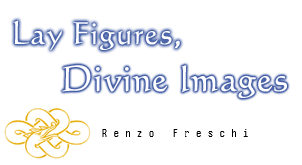|

No subject more fully
expresses the ideals of early Indian civilization than the yakshi, or
�female nature-spirit.� These delightful females showcase the most lively
and engaging sculpture of the Kushan period. The concept of yakshis emerged
as early as the Vedic age, combined with male counterparts known as yakshas.
These nature-spirits were absorbed into Buddhism but were always subordinate
to the Buddha, and this fact explains why yakshas and yakshis are boldly
conceived upon railing pillars forming circular stone fences surrounding
Buddhist reliquary monuments, or stupas.
Yakshas and yakshis facing the pillars greeted the individual worshipper
entering the stupa. On the narrow sides of each pillar are three oval
holes that were intended for thin crossbars. The circular railing would
have at least one tall entrance gateway comprised of two or three architraves.
Once inside the stupa precinct the worshipper admired the reverses of
the pillars, ornamented with three evenly spaced lotus roundels, or occasionally
with niches containing the Buddhist birth-stories (jatakas) or narrative
scenes. In this pillar the sculptors deliberately chose to place the yakshi
on the unblemished side of the stone block, allowing the heavily spotted
portion to appear on the reverse.
Yakshis were disposed in a wide variety of activities, reflecting their
daily lives as celestial nymphs. We therefore witness ladies adjusting
their necklaces, fastening belts, preparing their toilette, drinking from
a goblet or playing a musical instrument. Others are shown grasping the
branches of trees or placing one foot at the base of the tree. At the
top of the pillar is often added miniature �palace scenes�, enlivened
with men and women. These small figures are likely celestials couples,
or mithunas, placed there to foster the ethereal ambiance created by the
yakshi below (Czuma, 92, 94).
The theme of a yakshi playing with a parrot finds direct parallels with
other pillar sculptures from the Kushan period. The most well known is
from Bhutesvara, Mathura, where the pet parrot rests upon the yakshi�s
shoulder as its cage is held in her suspended hand. In this example, the
parrot nibbles at food offered by the yakshi. The bird balances on the
yakshi�s bangles, further enhancing the three-dimensional qualities of
the composition. The parrot, whose open mouth is close to the yakshi�s
breast and nipple, is highly suggestive and evokes a private moment that
the two companions share in their celestial world and preserved in stone.
The dimensions, motifs and figural style link this pillar to at least
two known examples, suggesting that all three once belonged to the same
stupa railing. In one example from the Norton Simon Museum, Pasadena,
the woman tightens her belt, and the other features the women adjusting
her necklace (Leoshko, fig. 3 ; Rossi, fig. 1, respectively). The graceful
bend at the hip arches the yakshi off to one side, while her right leg
is flexed. Above the figure are three evenly spaced compartments providing
a symmetrical anchor to the movement of the figure below. The complex
earrings, the finely incised lines forming the hair, and the intricate
layered belt are motifs marking the best of Kushan sculpture. The tour
de force, however, is the fold of flesh subtly protruding beneath the
navel. (Donald Stadtner)
|

